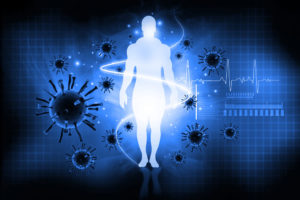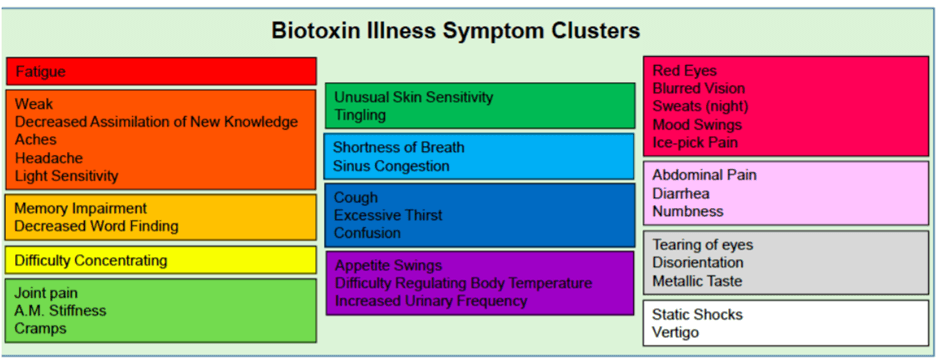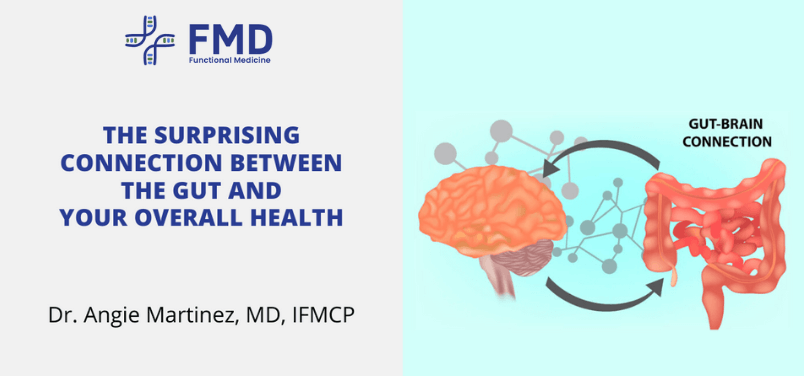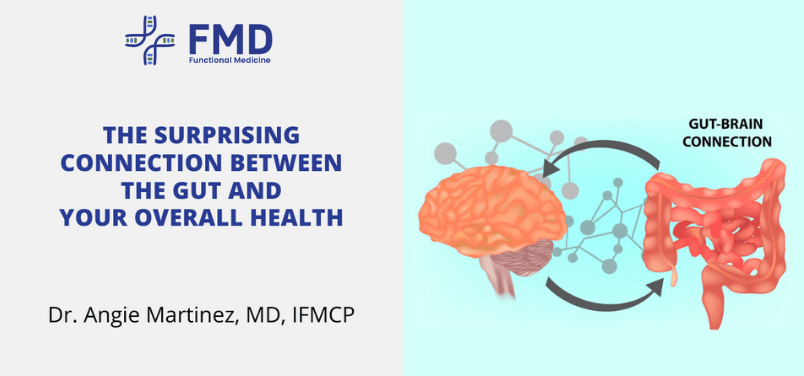 |
Dr. Karen D. Johnson, M.D. Functional Medicine Doctor CIRS Diagnosis & Treatment Expert |
Definition | Ways of Exposure | Biotoxins & Immune System | Diagnosis | Symptoms
I often see patients that have been on a journey towards health for a long time. They have been going from one specialist to another trying to find the reason for their chronic illness, without much success.
Their symptoms frequently seem random, unrelated, and hard to pin down. They are usually extremely sensitive to their environment, while everyone else around them is just fine. They experience constant sickness or are in constant pain.
On the other hand, their blood tests are completely normal, and their doctors can’t find anything wrong. In many cases, they are referred to see a psychiatrist! Is it all in their head?
If you have ever wondered if it’s possible that your building is making you sick, have experienced mysterious symptoms that just do not make any sense, or have never fully recovered from Lyme disease, you are not alone. There is a good chance you are not imagining these symptoms.
Recent research in the area of biotoxin illness, supported by thousands of cases, has found that exposure to biologically produced toxins, including toxic mold and algae can cause disease in people who are genetically susceptible. This condition, known as Chronic Inflammatory Response Syndrome (CIRS), now has enough clinical data behind it to allow us to properly diagnose and treat patients with these types of symptoms. There is hope on the horizon.
In this article, we will discuss CIRS, how to know if you may be affected, and the available treatment options to help you feel better.
What Is Chronic Inflammatory Response Syndrome?
Also known as biotoxin illness, CIRS is caused by exposure to biologically produced toxins (biotoxins) from the environment. For genetically predisposed people, the immune system is unable to effectively detect and eliminate these biotoxins. As the toxins circulate in the body, they keep triggering the immune system, causing an ongoing chronic inflammatory response.
The result is a multi-system, multi-symptom illness. In other words, the symptoms may affect many different parts and functions of your body, including the way you feel. The combination of all the inflammatory symptoms caused by the biotoxins is called Chronic Inflammatory Response Syndrome (CIRS).
How are We Exposed to Biotoxins?
Biotoxins are toxic substances that originate from biological organisms such as mold and algae. The main sources of biotoxins are:
- Mold exposure due to living or working in water damaged buildings (majority of cases)
- Eating tropical fish contaminated with ciguatoxin
- Tick (Lyme disease) or poisonous spider bites
- Exposure to toxins in contaminated water
Considering the most common biotoxin exposure comes from mold in water damaged buildings, it is extremely important to have your home or workplace checked. If it is mold, this means that you are constantly being exposed to more biotoxins every day.
Is My Building Making Me Sick?
 If you wonder if it is possible that your workplace, home or building are making you sick, the statistics around this are quite shocking.
If you wonder if it is possible that your workplace, home or building are making you sick, the statistics around this are quite shocking.
The National Institute for Occupational Safety and Health (NIOSH) estimates that 50% of American buildings have a history of water damage from leaking pipes, poorly fitting drains, poorly ventilated crawl spaces, water intrusion in the basement, or roof leaks.
According to Dr. Ritchie Shoemaker, MD, who is a recognized leader in patient care, research, educator and world renowned expert in the field of biotoxin illness who first described CIRS, approximately 24% of the population is genetically susceptible to mold toxins (mycotoxins).
Quite alarming numbers, I know. I see many patients who develop symptoms shortly after they enter their home or workplace, while everyone else around them seems just fine. Since others are not affected, your doctor or even you may doubt that there is a problem and may believe it’s just all in your head. This can make it challenging to get a diagnosis or identify the root cause of your symptoms.
It is important to understand when you have a genetic predisposition to mold biotoxins, as the symptoms may still affect you long after you leave the building. Due to your human leukocyte antigen (HLA) genetic profile your immune system may not be able to eliminate mold biotoxins. As a result, the toxins continue to circulate in your body and continue to make you sick. A blood test can determine your HLA type.
Eating Contaminated Fish
I once treated a couple who went on vacation to Hawaii. They ate tropical fish and both experienced food poisoning. Years later, the wife still had ongoing issues while her spouse was doing just fine. We had to use a historical timeline analysis in order to track down the biotoxin exposure in the past. Even though the contaminated fish had been eaten years before, it turned out that she had the HLA type preventing her from eliminating the toxins.
How Biotoxins Make You Sick
 Most people are surprised to learn a single exposure to biotoxins can still cause issues even years after. Isn’t our body smart enough to handle toxic mold or one incident of eating contaminated fish?
Most people are surprised to learn a single exposure to biotoxins can still cause issues even years after. Isn’t our body smart enough to handle toxic mold or one incident of eating contaminated fish?
When it comes to CIRS, genetics play a key role in the way your immune system handles biotoxins.
You see, we all have a nonspecific innate immune system we are born with, which acts as our first line of defense against foreign invaders. When confronted with an invader, the immune system releases signals to the body there is a threat. The body responds by producing chemicals to destroy the invader.
These chemicals are what make us feel off when we are “coming down with something”. It is usually not the virus or bug itself that makes us experience these uncomfortable symptoms but the response of the body trying to fight off the threat.
The second part of the immune system is the adaptive immune system. This is a much more precise system that works by producing specific antibodies against an invader. Since it takes time for our body to make targeted antibodies, we have the innate immune system as a backup, or in other words, our frontline of defense.
The people with certain HLA types have are unable to make antibodies against certain biotoxins. As a result, the toxins cannot be removed by the adaptive immune system and continue to circulate in the body. Our body does have a backup plan which is not very efficient. The plan is for the liver to dump the biotoxin from the bile into the gut. The problem is biotoxins are so small, 95% of them are quickly reabsorbed through the lining of the gut.
The result: the biotoxins continue to circulate in the body indefinitely. The innate immune system constantly signals to the body that there is a threat. However, it can’t eliminate the biotoxins. This ongoing overactivation of the immune system leads to excessive inflammation affecting the joints, lungs, nerves and brain. This is why CIRS is characterized by multiple symptoms in multiple systems.
Do I have CIRS or Something Else? CIRS Diagnosis Challenges
 Unlike many illnesses that can be easily detected with lab tests, that is not the case with CIRS. Your bloodwork may be completely normal since routine tests for inflammation and chronic pain are not abnormal in CIRS.
Unlike many illnesses that can be easily detected with lab tests, that is not the case with CIRS. Your bloodwork may be completely normal since routine tests for inflammation and chronic pain are not abnormal in CIRS.
The symptoms you may experience often affect multiple systems in your body and will make no sense to physicians not trained in CIRS. It is very common for a person with CIRS to go from one doctor to another, looking for an answer, just to end up with more questions, more tests. The worst case is a misdiagnosis of the wrong condition.
In fact, many CIRS patients are diagnosed with a generic type of disorders like fibromyalgia, chronic fatigue syndrome, or in some cases are referred to a psychiatrist! Other common misdiagnosis includes: anxiety, depression, hypochondria, PTSD, allergies and IBS.
The bottom line, and I can’t stress this enough: CIRS can cause devasting symptoms and can dramatically affect your quality of life. CIRS is often overlooked or misdiagnosed by medical professionals and as a result many people end up giving up and losing hope.
If you suspect your issues may be related to biotoxin exposure, you should be evaluated by a functional medicine physician who is certified by Dr. Shoemaker to diagnose and treat CIRS. A trained medical professional can assess your risk factors and likelihood of CIRS in a telemedicine consultation.
Below are some of the key factors we look into during the initial assessment for CIRS.
Common CIRS Symptoms
A key element in the initial diagnosis for CIRS is the medical history analysis. This evaluation is essential in order to:
- Identify and validate the biotoxin exposure.
- Make sure your symptoms cannot be explained as the result of any other illness.
The third part of the initial evaluation is the symptoms review. Based on his research, Dr. Shoemaker has identified thirteen specific clusters which the symptoms can be grouped into (see chart below).
According to the protocol, if the above criteria are met, having one or more symptoms in eight of the thirteen clusters indicates a high probability of CIRS. At that point, additional testing will be needed to confirm a diagnosis.
In my practice, I find most common symptoms CIRS patients experience include chronic fatigue, joint pain, brain fog, poor memory, headaches, increased thirst, weight gain, and appetite fluctuations.

Visual Contrast Sensitivity (VCS) Test
The VCS is an online test that detects issues in the ability to distinguish changes in contrast. A person with biotoxin related illness will usually have trouble picking up on visual contrast within images on a screen and will perform poorly on the test. This is because biotoxins can reduce the flow of blood in the vessels around the optic disc at the back of the eye, where our vision is centered.
The VCS test is considered a very good screening test for CIRS. Since it can be done at home, I often ask my patients to complete the test prior to the office visit.
Additional Testing For CIRS
Additional lab tests specifically look at how your immune system is responding to a biotoxin, and may also include HLA genetic haplotype. 95% of people with CIRS have a susceptible haplotype. I find many people are interested in this test in order to know if their children may be susceptible as well.
When we talk about genetics and CIRS, it is important for me to emphasize, that even if you have the HLA susceptible haplotype, you don’t have to live in a bubble to protect yourself from biotoxins. Become aware of the common sources to prevent exposure as much as possible. Know what actions to take in case of re-exposure. Knowledge is key.
Mold Allergy vs. CIRS
Mold formed due to water damage can be highly toxic and may affect people who are not HLA genetically predisposed. Many people are allergic to mold and will experience symptoms such as respiratory issues, headaches and others while in the presence of mold.
This is a completely different immune reaction, though. The main difference between a mold allergy and CIRS is that a person with a mold allergy will usually experience symptom relief shortly after they leave the water damaged environment. Their bodies will clear the allergens and return to normal. With CIRS, biotoxins will continue to circulate in the body resulting in persistent symptoms.
On that note, urine mycotoxins tests are not only expensive, but completely useless for CIRS. These are not a part of the CIRS protocol. I often see patients who become very concerned after they have tested positive. If that’s you, you may have nothing to worry about. You can have a positive urine test for mycotoxin after you drink kombucha tea or eat cultured, aged or fermented foods, as these may have small amounts of mold in them.
Final Thoughts
Living with CIRS and not knowing it can be an endless nightmare. Thanks to the research of Dr. Shoemaker, there is now clinical validation supported by thousands of cases of people who have been cured. As a result of this work, we know exactly how to diagnose and treat this condition. This means you can live a normal life, even if you are genetically susceptible.
If you suspect that your issues may be related to biotoxins exposure, I encourage you to not give up. Speak with a functional medicine physician who is certified by Dr. Shoemaker in the identification and treatment of CIRS. As I mentioned earlier, in many cases, it is definitely possible to evaluate the likelihood of you having or not having CIRS in a telemedicine consultation.
Read Next
Dr. Shoemaker’s Protocol for Treating CIRS.
- Dr. Shoemaker’s Protocol for Chronic Inflammatory Response Syndrome - October 7, 2019
- Always Sick? You May Have Chronic Inflammatory Response Syndrome - October 7, 2019
- The Elimination Diet Explained: The Facts You Need To Know - September 14, 2019




